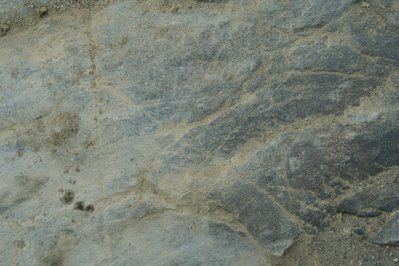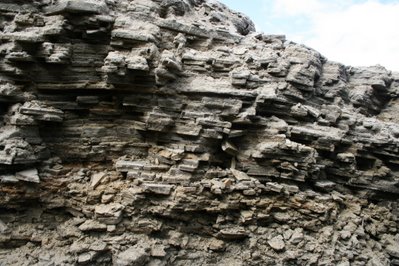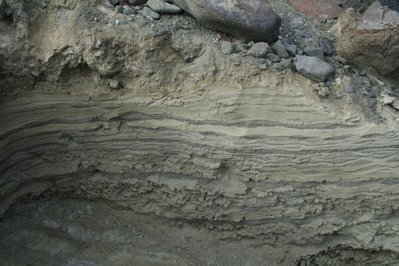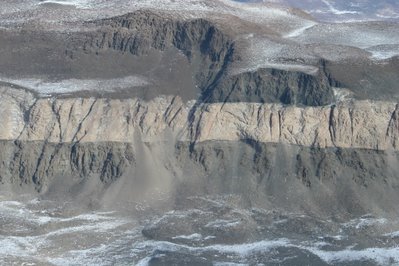

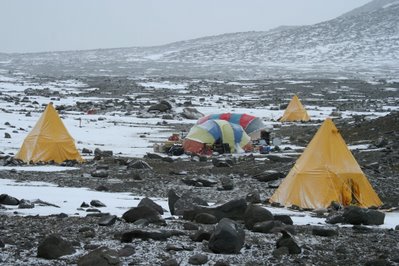
"...he seemed to find a curious private pleasure in doing something he knew to be absurd, with minute efficiency." Evelyn Waugh MEN AT ARMS
"Is there such a thing as chance? I was coming to believe that a lot of what seems to happen 'by chance' is in fact our own doing: once we look at the world through different glasses we see things which previously escaped us, and which we therefore believed to be non-existent. Chance, in short, is ourselves." Tiziano Terzani A FORTUNE-TELLER TOLD ME
November 25th
Dear Deany,
Not much to do around here except read books and split rocks....
Coincidences swirl in the air amongst the big, heavy snowflakes that are falling on the Friis Hills tonight. As sometimes happens when one learns a new word, or encounters the name of some previously unknown locale, only to find it cropping up everywhere in a series of tormenting, persistent dejas vu, I cannot seem to free myself from the literature of Antarctica. Or, at least, the antarctic in literature. "How can you read that stuff?" Adam Lewis asked Alan Ashworth and me, when he heard the two of us recently discussing Douglas Mawson and his diet. "Don't you want something tropical to read when you're down here? Some Conrad or something?" No. Precisely not. Because we are here. Where the greats trudged and froze and died. But now, after putting away Amundsen and Cherry-Garrard, Wilson and Mawson, Wheeler and Huntford, I have finally exhausted the thousands of antarctic words that I schlepped all the way from New York. I thought a chapter closed, as it were, and felt ready to move on.
To give myself just such a break from the "ice-writers," I brought along "Trawler," by Redmond O'Hanlon, one of England's greatest living travel writers, although he has produced only four travelogues. Tropical indeed. Each and every one of his efforts prior to "Trawler" is the chronicle of a maniacal and obsessive jungle trek to the brink of exhaustion; his entire oeuvre is a trio of sweaty, steamy, malarial, chlorophyll-drenched journeys through Borneo, Venezuela, and Congo.
In "Trawler," Luke Bullough, a PhD candidate in marine biology, convinces O'Hanlon that to see wild, amazing and astonishing life forms there is no need to melt in the feverish tropics while being consumed by hideous insects. The deep waters of the North Sea offer all the biodiversity and oddity one could possibly hope for, he argues. Not to mention the timeless pleasures of a sea voyage. I highly recommend the read to my foxy marine biologist friends Gretchen, Anne and Mackenzie and that dude Tim that they work with short-lining fish out of the ice-covered Ross sea.
On the eve of their departure aboard the commercial fishing trawler Norlantean, from the Orkney port of Stromness, into the teeth of a force 12 January gale, Luke and Redmond drink their last Guinesses in a pub. These beers O'Hanlon will very soon offer back up to the sea in one of literature's most lengthy and exhaustive descriptions of sea-sickness. At the bar they sit "beneath a portrait of Sir John Franklin's vessels Erebus and Terror, which, as we were to do, I remembered, had sailed out of Stromness, never to be seen again." Now, those who do not live on Ross Island may not remember, but the two great mountains on it are named for those very same ill-fated vessels. As if that were not enough, where do you think the preternaturally adept trawlerman Luke Bullough turns out to have learned his fisheries skills? As an inspector in Antarctic waters, of course.
No sooner had I turned the last salt-sprayed, fish-gutty page of "Trawler," than I pulled Anne Fadiman's "Ex Libris" out of my plastic Pelican steamer-trunk. A book-lover's lover's book, subtitled "Confessions of a Common Reader," it is a thin, sometimes cute, rather light, but often delicious exploration of bibliomania, which I intend to pass along to my mother in the hope that, despite being almost forty-five years into the proposition, she may still be capable of fresh insights into the workings of the mind of her husband, my father, a man whose home office is a sort of maze of stalagmitic piles of books, a room so crammed with teetering Greco-Roman columns of literature that even when he has made space for himself to sit in there, one is hard pressed to find him amongst the volumes. But I digress. In her third essay, "My Odd Shelf," Fadiman argues that no matter the organizational strategy of the private collection, from the anally retentive to the wildly chaotic (viz. pater big John V., above) there exists somewhere within it "a small, mysterious corpus of volumes whose subject matter is completely unrelated to the rest of the library, yet which, upon closer inspection, reveals a good deal about its owner."
Fadiman does not tell us what George Orwell's collection of nineteenth century women's magazines reveals about him, but she admits to the contents of her own odd shelf: "sixty-four books about polar exploration... so charged with sentiment that they might as well be smudged with seal blubber and soaked with spray from the Weddell Sea." All of the explorers she fancies were "unqualified failures," she writes. "Not coincidentally, they were also all British." Elaborating on her theme, she goes on to say that she has "always found the twilight-of-an-empire aspect of the Victorian age inexpressably poignant, and no one could be more Victorian than the brave, earnest, optimistic, self-sacrificing, patriotic, honorable, high-minded and utterly inept men who left their names all over the maps of the Arctic and Antarctic, yet failed to navigate the Northwest Passage and lost the race to both Poles."
She reads Edward Wilson to her husband George, at night, in bed. He grunts, and, we presume, rolls over and snores. (In what seems yet another coincidence, just like Redmond O'Hanlon and me, George "is a rainforest man himself. He likes to dream of sitting under a giant tropical tree, his shoulders festooned with decaying lianas and sprouting bromeliads, with five hundred species of multi-colored slugs dropping on his head.") Fadiman reads on, alone in her own polar vortex, reminding us that the search party that found Scott's, Wilson's, and Bower's bodies found also, on their man-hauled sledge, "thirty-five pounds of rocks containing late Paleozoic fossils, leaves and stems of the genus Glossopterus, which the men had dragged 400 miles from the Beardmore Glacier."
This was one coincidence too many. After all, I am at the moment camped with a party of geologists on what is probably the most fertile fossil bed yet discovered on the Antarctic continent. And Professor Alan Ashworth, of North Dakota State University, who lives all of fifty yards away on the way to the "comfort station," has himself spent several previous field seasons collecting fossils on the Beardmore. I was spooked. I put Fadiman's book down and left my tent, stepping outside to take some deep, cold breaths of crisp Antarctic air.
Invigorated, I headed for the box. I know I mentioned in an earlier missive from Mt. Boreas the toilet, or rather the lack thereof. Our facility, if I may call it that, is a gray five-gallon bucket much like an empty drum of spackle, but lined with a plastic bag and housed within a topless plywood box, upon which rests a sculpted styrofoam ring designed for maximum comfort. The entire contraption we refer to as "the box." As in "I'm going up to the box, do I have any competition?" Or, to paraphrase Titus Oates, "I'm off to the box, I may be some time." This is generally taken to be short for "crap box," or, for that matter, any other one of our abundant excremental euphemisms. Only last week as I made my way there I heard Dr. Ashworth refer to it as the "thunder-box," which although on the face of it less obscene, conjured rather too vivid a picture. I remember wondering at the time if this was an archaic construction or his original invention. When one is en route, however, one tends not to pause too long in the contemplation of such etymological curiosities.
Having relieved myself of my anxieties, I returned to my tent, and to Fadiman. Only a few short essays after "My Odd Shelf" I found one entitled "You Are There," dedicated to "the practice of reading books in the places they describe." Here she explained why, some years ago, I had packed "Gabriela, Clove and Cinnamon" on a trip to Ilheus, in Bahia, for rereading in the city where Jorge Amado set and wrote it, despite considering a stack of other books which I had not yet read.
Indescribable were the joys of tramping through decrepit cacao plantations between reading chapters denouncing those corrupt colonels who once waged wars over the very same hectares. Delightful to retreat for the evening and drink caipirinhas on the same cobbled plaza where the cacao barons of Amado's pages arrived by horse-and-buggy to gamble away their sticky riches in the saloons of Ilheus.
Fadiman, who professes to have read "Yeats in Sligo, Isak Dinesen in Kenya, and John Muir in the Sierras" makes no mention of bringing the contents of her "odd shelf" to Antarctica. But I'm certain that if she were ever to find herself camped up here in the Friis Hills, Wilson and Cherry-Garrard would be there too, tucked into the marsupial pouches on the walls of her Scott tent. Despite his genius, Conrad, I suspect, would be resting safe on the shelves at home, awaiting a cruise on the Andaman Sea....
I know what you are thinking. How nicely things have come full circle in that last paragraph, Conrad jostling with the Antarctic greats, the philosophy of site-specific reading explained, echoing the lead; Why even continue? Wasn't that just the place to end?
But how then to justify that trip to the rest room, the absurd digression into fifth-grade potty humor of a few paragraphs back?
To explain I must embarrass myself with the admission that although I have my own shelf at home dedicated to Evelyn Waugh, I had never read "Men at Arms." In the last moments of packing I took it down and tucked it into a Pelican case for shipment to Antarctica, thinking it would be perfect if in fact I decided I wanted to read something that would pull me far away from here. Putting away Fadiman, I pulled out Waugh. Surely there, in a novel proposing that the turmoil of World War Two bound the final shroud around the mummified British class system, I would avoid any Antarctic resonance.
"Men at Arms" is the story of Guy Crouchback, the childless and no longer married Catholic last of his line. Moribund since his divorce years ago, too young to have honored his country in the first great war and too old to contribute much in the second, Crouchback nonetheless emerges from a terminal early retirement and contrives to join the antiquated Royal Corps of Halberdiers, where he falls in with Apthorpe, an ambitious sycophant with delusions of warrior grandeur. The only other newly-minted Halberdier in his graying mid-thirties, "Apthorpe alone looked like a soldier. He was burly, tanned, moustached, primed with a rich vocabulary of military terms and abbreviations. Until recently he had served in Africa in some unspecified capacity."
Apthorpe, nonetheless, has issues. He carts mountains of strange gear with him to every new barracks inhabited by the Halberdiers, and for fear of syphilis, he confides to Crouchback, he refuses to sit on the dormitory toilets of the commandeered preparatory school in which they are billeted. Instead he has carted with him all the way from Karonga, wherever in Africa that is, a portable, dry-chemical commode, a square box of oak and brass of the sort that even in 1939 they didn't make like that any more. Crouchback wonders what it is that the secretive Apthorpe has hidden beneath the stairs: "Well, if you must know," comes the reply, "it's my Thunder-box."
See you soon,
Rich



